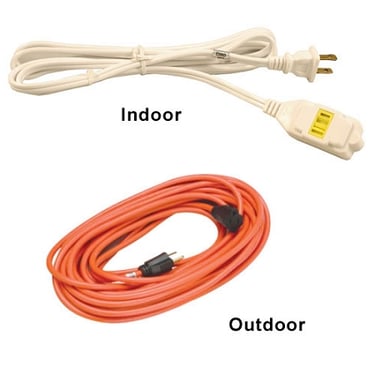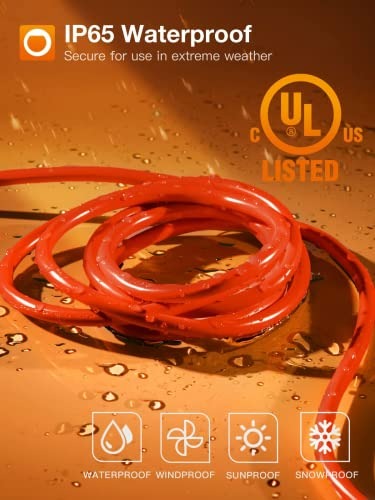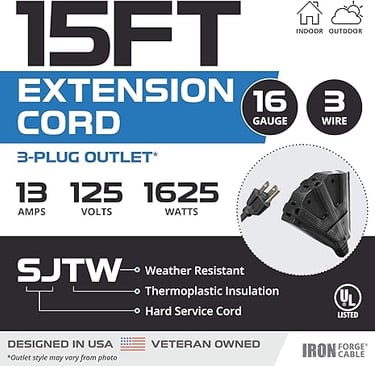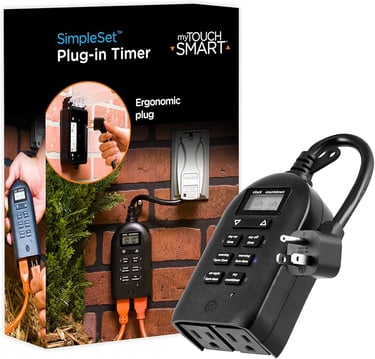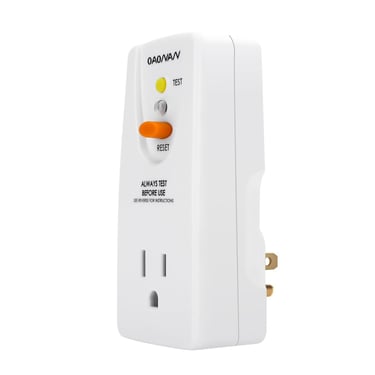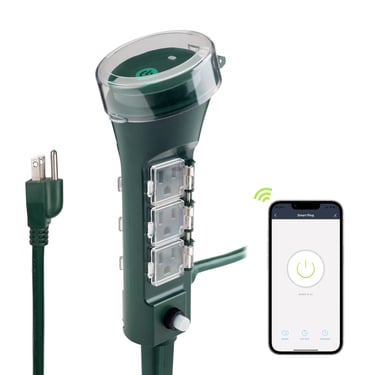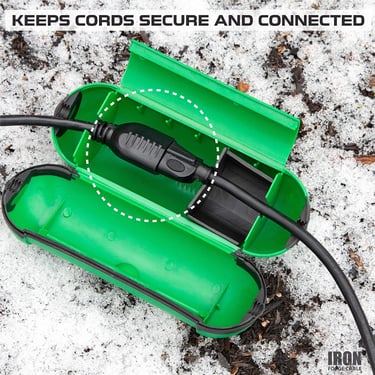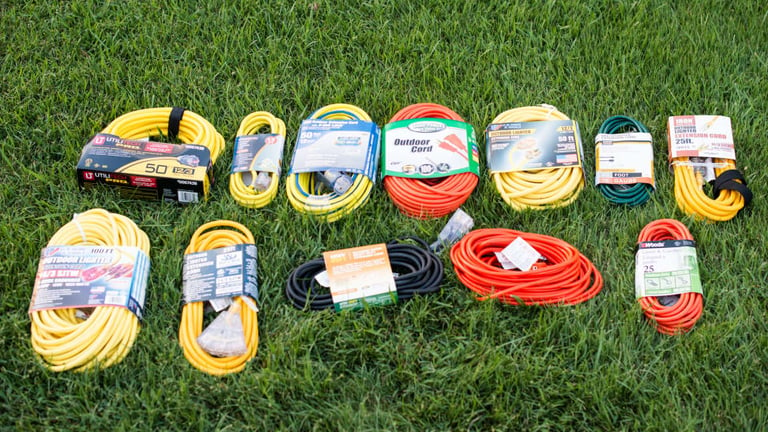Ultimate Guide to Powering Your Easter Inflatables Safely
Don't let bad cords ruin Easter! Choose the right outdoor extension cords for lights & decorations. Get tips for weatherproof, heavy-duty options now.
Frank Adminei
4/7/20256 min read
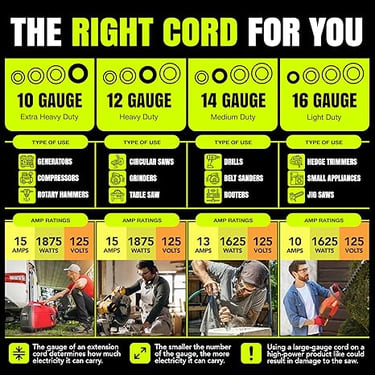

Introduction
Let’s be honest—nothing ruins a festive Easter display faster than a flickering inflatable bunny or a string of pastel lights that suddenly go dark. And guess what? Nine times out of ten, the culprit is a bad extension cord.
Choosing the wrong one isn’t just an inconvenience; it’s a potential fire hazard. Outdoor decorations need power sources that can handle the elements—rain, dirt, fluctuating temperatures—without putting your home (or your holiday spirit) at risk.
So, how do you pick the right extension cord for your Easter setup? This guide cuts through the confusion and helps you find a safe, durable, and reliable option—because no one wants to explain to the neighbors why their glowing Easter egg display shorted out the whole block.
Why You Need Outdoor-Rated Extension Cords
Indoor vs. Outdoor Extension Cords: Why It Matters
It’s tempting to grab any extension cord lying around the house, but that’s a disaster waiting to happen. Here’s the deal:
Outdoor extension cords are built for battle. They have tough, weather-resistant insulation that can handle rain, snow, UV exposure, and even temperature swings. If your Easter inflatables or string lights will be outside, this is non-negotiable.
Indoor cords? Forget it. They’re not designed to take on the elements. One downpour, and you’re looking at potential electrical shorts, overheating, or worse—a fire hazard.
Bottom line: If it’s going outside, it needs to be rated for outdoor use. Look for cords labeled “W” for weather-resistant—anything less is a gamble.
🔹 What Makes an Extension Cord Safe for Outdoor Use?
Not all extension cords are created equal—especially when it comes to outdoor use. If you want to avoid flickering lights, electrical shorts, or a potential fire hazard, here’s what to look for:
Water-Resistant Coating – A true outdoor extension cord has a tough, weatherproof jacket that repels moisture. Rain, dew, or even a stray sprinkler won’t turn your Easter display into a shocking experience—literally.
Thick, Durable Insulation – Outdoor cords have extra layers of insulation to handle temperature swings, dirt, and even accidental foot traffic. A flimsy cord won’t last through one season of unpredictable spring weather.
UL or ETL Certification – Don’t just take a manufacturer’s word for it. Look for UL (Underwriters Laboratories) or ETL (Intertek) certification, which means the cord has been tested for safety. No certification? Hard pass.
Skipping these features isn’t worth the risk. A cheap, uncertified cord might save a few bucks, but is it worth frying your decorations—or worse, your home’s electrical system?
Key Factors When Choosing an Outdoor Extension Cord
Cord Gauge & Power Capacity: Get It Right or Risk a Meltdown
Ever had your decorations randomly shut off or your extension cord feel way too warm? That’s usually a power capacity issue. Extension cords come in different gauges, and picking the wrong one can lead to overheating, tripped breakers, or decorations that just won’t stay on.
Here’s the breakdown:
16-Gauge – Light-duty. Works for small decorations like LED Easter eggs or a single string of pastel lights. But don’t push it—this isn’t for anything with a motor or serious wattage.
14-Gauge – The sweet spot for most Easter setups. It can handle multiple decorations, like a couple of inflatables and some string lights, without breaking a sweat.
12-Gauge – Heavy-duty. If you're running high-power inflatables, multiple decorations, or need to stretch power over a long distance (50+ feet), this is the safest bet.
The rule? Lower gauge = thicker wire = more power capacity. Don’t undersize your cord, or you might find your Easter bunny deflating mid-celebration—or worse, melting insulation from overheating.
Cord Length & Voltage Drop: Why Size Really Matters
Think longer is always better? Not when it comes to extension cords. The longer the cord, the more voltage drop you’ll get—meaning your decorations might not get the full power they need. That’s how you end up with dim lights, sluggish inflatables, or decorations that randomly shut off.
Stick to 25-50 ft cords for most setups to minimize power loss.
Going 100+ ft? Use a lower gauge (thicker wire) to compensate for the voltage drop. A 12-gauge cord is a must for long distances.
Weatherproof & Safety Features: No Cutting Corners
Outdoor extension cords take a beating, so they need to be built for it. Look for:
Wet-Rated Markings ("W" or "W-A") – If it’s not rated for wet conditions, it has no business being outside.
Three-Prong (Grounded) Plug – That third prong isn’t just there for fun. It reduces shock risks and protects against power surges. Never use a two-prong cord outside.
Tangle-Resistant Design – Wrestling with a tangled mess of cords while trying to set up decorations? No thanks. Look for a flexible, kink-resistant coating for easy handling and storage.
Bottom line? A cheap, flimsy cord isn’t worth the risk. Get one that’s built for outdoor use, or you’ll be replacing it (or worse) before Easter even rolls around.
Best Outdoor Extension Cords for Easter Decorations
🔹 Choosing the Right Extension Cord for Your Easter Display
Not all decorations need the same power setup. Using the wrong extension cord can lead to flickering lights, weak inflatables, or even blown fuses. Here’s how to match your cord to your display:
For Easter Inflatables & Larger Displays
Big decorations need serious power—don’t skimp here.
✔ 12- to 14-gauge heavy-duty extension cords – Strong enough to handle multiple inflatables and high-wattage decorations.
✔ Weatherproof and grounded – A must for safety, especially if you’re running power over damp grass or near landscaping.
For Easter String Lights & Small Décor
Lighter decorations don’t need as much power, but convenience matters.
✔ 16-gauge outdoor cords – Perfect for LED string lights, light-up eggs, and small decorative pieces.
✔ Built-in timers – Skip the hassle of plugging and unplugging—set it and forget it.
✔ Green or white cords – Helps blend in with grass, bushes, or pastel-themed setups. No ugly orange cables ruining your aesthetic.
For Smart & Timed Setups
Want full control without stepping outside?
✔ Smart outdoor extension cords with Wi-Fi control – Turn your Easter lights on or off from your phone. Perfect for those “oops, I forgot” moments.
✔ Built-in timers – Automation makes everything easier. No more running out in your pajamas to unplug decorations.
Choosing the right extension cord isn’t just about power—it’s about safety, convenience, and keeping your Easter display looking flawless.
Proper Setup & Safety Tips
Do’s & Don’ts for Easter Extension Cord Safety
Ignoring basic safety rules can turn your cheerful Easter display into a fire hazard—or at the very least, an electrical nightmare. Follow these do’s and don’ts to keep your setup safe and functional.
✅ Do’s:
✔ Use a GFCI-Protected Outlet – Ground Fault Circuit Interrupter (GFCI) outlets shut off power if they detect moisture or an electrical fault—critical for outdoor setups. If your outlet isn’t GFCI, use a GFCI adapter.
✔ Keep Cords Off Wet Ground – Laying cords directly on grass, dirt, or puddles is asking for trouble. Use cord covers, raised stakes, or conduit tubing to keep them dry and safe.
✔ Secure Cords Properly – Loose cords are a tripping hazard, and yanking on them can damage insulation. Use stakes, cable clips, or outdoor-rated tape to keep them in place.
❌ Don’ts:
❌ Don’t Overload a Single Cord – Every cord has a wattage limit. Overloading can cause overheating or even an electrical fire. If you need more power, use an outdoor-rated power strip or a second extension cord on a different outlet.
❌ Don’t Connect Multiple Extension Cords – Plugging one extension cord into another (a.k.a. “daisy-chaining”) weakens the current and increases fire risk. If you need more length, buy a longer, properly rated cord instead.
❌ Don’t Leave Connections Exposed – If a plug connection sits out in the open, moisture can seep in and cause shorts. Use a waterproof cord cover or wrap the connection point in plastic and electrical tape for extra protection.
A little planning goes a long way. Following these safety tips keeps your Easter display running smoothly—without flickering lights, tripped breakers, or worse.
Storing & Maintaining Your Outdoor Extension Cords
Extension Cord Care: Store It Right, Use It Safely
Neglecting your extension cords after the holiday can shorten their lifespan—or worse, leave you with a dangerous, faulty cord next season. Here’s how to keep them in top shape.
How to Store Cords Properly
Coil, Don’t Crumple – Avoid kinks, knots, and tight bends that weaken the insulation. Use a loose coil and secure it with a Velcro strap or twist tie.
Keep It Dry – Moisture is an extension cord’s worst enemy. Store in a garage, shed, or storage bin—never in damp areas.
Avoid Extreme Temperatures – Freezing temps can make cords brittle, while excessive heat can warp the insulation. A temperature-controlled space is best.
Checking for Damage Before Reuse
Inspect for Cracks or Frays – Even a small crack in the insulation can lead to sparks or shorts. Run your hands along the cord to feel for any weak spots.
Look for Exposed Wires – If you see copper, that cord is done. No amount of duct tape will make it safe.
Test Before Use – Plug it in and check for flickering, overheating, or a loose connection. If anything seems off, replace it.
A well-maintained extension cord can last for years, but a damaged one is a fire hazard waiting to happen. When in doubt, throw it out and invest in a safe, outdoor-rated replacement.
Conclusion
Keep your Easter bright and safe. Use weatherproof extension cords made for the job. This protects your decorations, home, and guests. Enjoy the holiday knowing you’ve made smart choices for safety.
